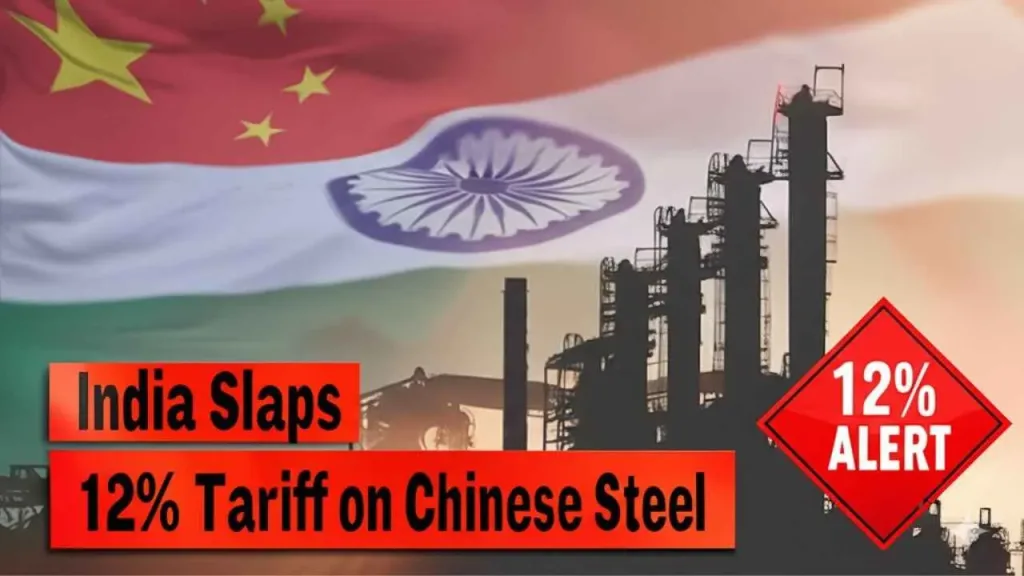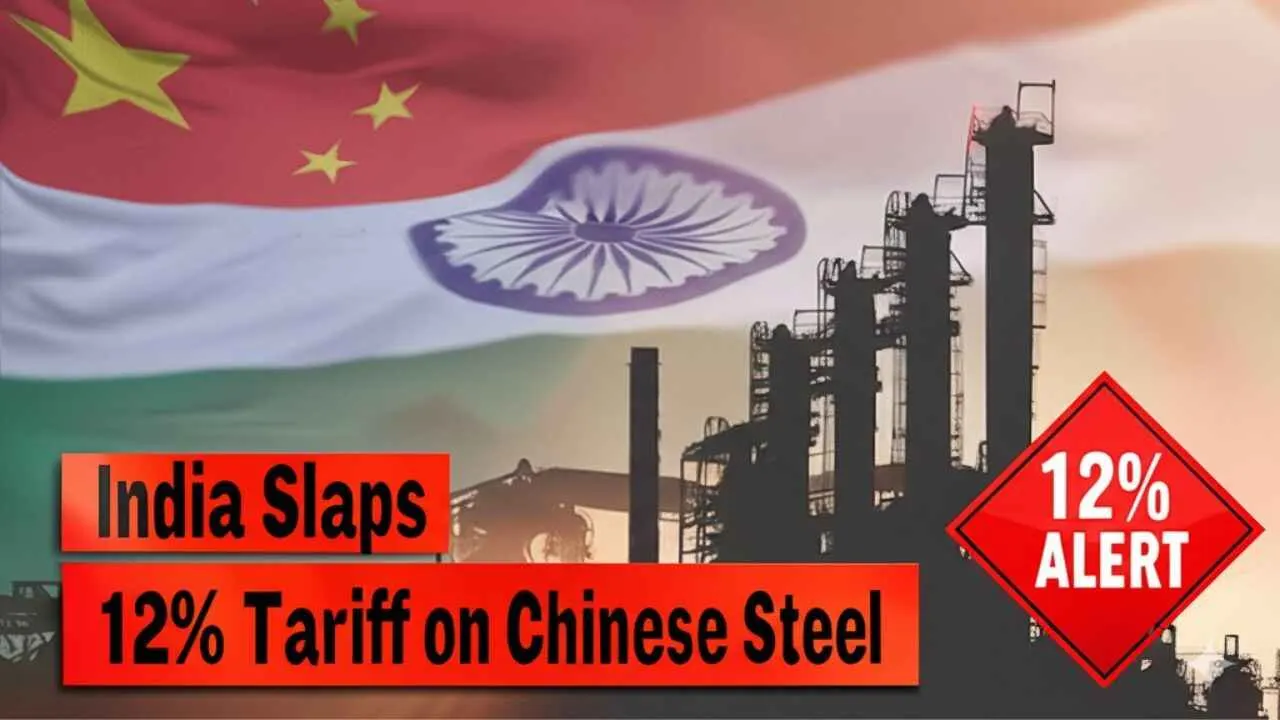🇮🇳 India Slaps 12% Tariff on Steel Imports to Shield Domestic Industry
Subheadline: Strategic policy move aims to counter cheap Chinese imports—markets react with caution as investors brace for ripple effects across global trade and currency markets.
📌 Quick Take:
- Policy Alert: India enforces a 12% tariff on select steel imports, citing unfair pricing pressure.
- Market Movement: Institutional buying continues, but technical charts reveal momentum shifts.
- Global Lens: Rupee weakens as US Dollar strengthens; geopolitical tensions loom large.
- Trader Insight: High caution zone—wait for a breakout confirmation before entering positions.
🔍 Government Moves to Protect Indian Steelmakers
In a decisive policy intervention, the Indian government has introduced a permanent 12% tariff on specific steel imports—primarily aimed at curbing the rising tide of low-cost Chinese steel that has been undercutting domestic manufacturers.
“This safeguard measure is critical for sustaining our domestic capacity and ensuring fair competition,” a senior official told sources, requesting anonymity.
The tariff is expected to have immediate implications on trade dynamics, especially as it arrives at a time of heightened India-China geopolitical tension and increased scrutiny over global supply chain dependencies.
📊 Market Reaction: Institutional Cues vs. Technical Traps
Despite geopolitical jitters, institutional investors registered net buying of ₹1,970 crore in the latest trading session, with mutual funds contributing ₹200 crore. However, the derivatives segment told a different story—one marked by subtle shifts in sentiment.
In the index futures space, large institutional players were observed repositioning, which often precedes major directional reversals in Nifty. As predicted in our earlier Telegram alerts, the market slipped into a tactical trap zone (24,190–24,111), shaking out overleveraged intraday participants.
📈 Options Data: Professionals Calm, Retail Traders Vulnerable
While options data signals medium bullishness from professionals, retail traders seem to be misinterpreting the stability as a green light for aggressive positioning. Historically, such low-volatility windows have been the prelude to sudden market breakouts or breakdowns.
There’s also significant Open Interest (OI) buildup around the 24,700 Nifty level, suggesting a near-term resistance. Meanwhile, Put writers appear cautious, adding another layer of uncertainty.

🌐 Global Headwinds: Rupee Under Pressure as USD Surges
On the macro front, the US Dollar Index continues its bullish trajectory, sending the Indian rupee into a zone of weakness. This unexpected move has triggered renewed volatility in currency markets and increased apprehension among Foreign Institutional Investors (FIIs).
Adding to the uncertainty, Finance Minister Nirmala Sitharaman has landed in the United States for a five-day diplomatic visit. Stakeholders anticipate potential bilateral announcements or trade cues that could further affect the domestic market landscape.
🔮 Nifty & Bank Nifty Outlook: A Technical Crossroads
Nifty currently faces a decisive resistance at 24,550. A sustained move above this could trigger a bullish breakout, though consolidation remains the most probable near-term scenario.
On the other hand, Bank Nifty is displaying relative strength by holding key psychological zones—indicating institutional support and selective sectoral resilience.
🧠 Pro Tips for Traders: Discipline Over Desperation
Given the mixed signals and high-stakes policy landscape, traders are advised to wait for confirmation before taking major directional positions.
🔔 “This is a market for reactive strategy, not predictive guesses. Trade the breakout, not the buildup.”
Risk management remains the most important tool in a trader’s arsenal right now. Avoid overleveraging and stay clear of emotionally driven trades.
📌 Conclusion: Tariff Policy Sets the Stage for Volatility
As India flexes its policy muscles to protect key sectors, the market enters a pivotal phase. From currency fragility to technical indecision, multiple variables are converging—demanding clarity, caution, and strategic insight from both traders and investors.
Stay updated, stay safe, and above all, trade with awareness.
